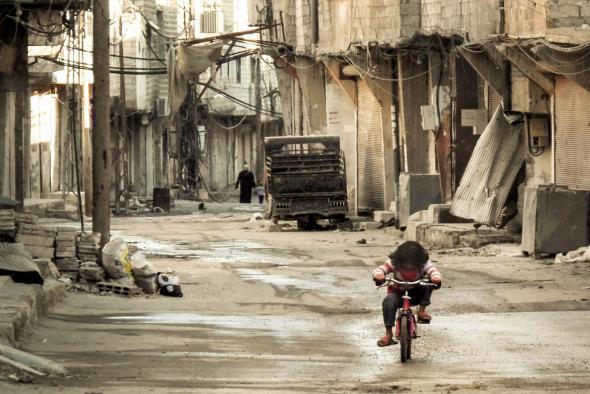A new report from UNICEF describes 2014 as one of the worst years on record for the world’s children, with millions impacted by conflicts in the Central African Republic, Gaza, Iraq, South Sudan, Syria, and Ukraine. “Never in recent memory have so many children been subjected to such unspeakable brutality,” the U.N. agency’s director, Anthony Lake, told the New York Times. The following post, originally published last July, looked at why modern warfare has become so deadly for kids.
It’s striking how many of the recent crises that have received international attention prominently involve violence against children.
More than 40 children have already been killed in Israel’s strikes against Gaza, a crisis that of course began with the kidnapping and murder of three Israeli teenagers. The killing of four Palestinian boys on a Gaza beach, as the New York Times’ Anne Barnard put it, “came quickly to symbolize how the Israeli aerial assaults in Gaza are inevitably killing innocents in this crowded, impoverished sliver of land along the Mediterranean Sea.”
Meanwhile on America’s southern border, we’re seeing the consequences of an escalating drug war in Central America in which children increasingly find themselves on the front lines. In El Salvador, murders of children have increased even as the overall homicide rate dropped following a gang truce. (Unfortunately, as my colleague David Weigel notes, this is attracting depressingly little sympathy in Washington.)
Then of course, there’s Boko Haram’s ongoing campaign of terror in northern Nigeria, which attracted international attention after the abduction of 223 girls in April. Most of the girls are still missing.
A new annual report from the U.N. secretary general looks at trends in violence against children in 2013, finding “a significant spike in the killing and maiming of children in several situations, including in Afghanistan and Iraq.” The U.N. also documented more than 4,000 cases of children being recruited and coerced into combat.
Why do today’s wars seem deadlier than ever for children? The New Yorker’s Robin Wright reflects on the issue, writing, “today’s wars are increasingly within countries rather than between them; the fighting has moved to city streets, invading the playrooms of homes and kindergartens.”
This corresponds with the findings of another recent U.N. report, this one looking specifically at Afghanistan, which found that casualties among women and children rose much more quickly than for adult men last year due to a shift from improvised explosive devices to gun battles in heavily populated areas as the most prominent form of violence.
Of course, not all violence against children is incidental, the inevitable result of shifting patters of warfare. There are extensive reports of Central American criminal organizations targeting children for recruitment or as a means of punishing or extorting their parents. Boko Haram’s massive abduction got it exactly the kind of international publicity it craves. The three Israeli teenagers who were killed last month were clearly intentionally targeted, as was the Palestinian teenager killed in retaliation. ISIS has deliberately targeted families with children in Iraq as part of its clash with Kurdish forces. Syrian forces have been accused of deliberately targeting children for detention and torture.
In a world where violence is shifting from battles between state-sponsored militaries to clashes involving nonstate groups fought in communities, children aren’t just often the victims, they’re often the targets.
